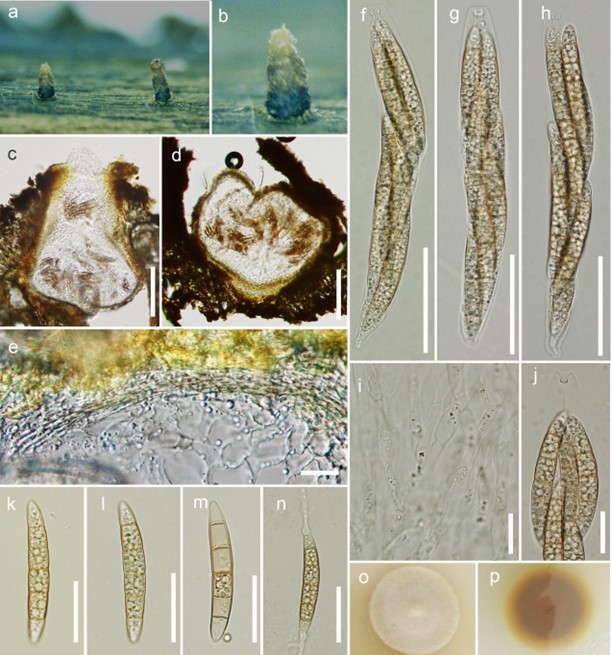Pseudohalonectria Minoura & T. Muroi, Trans. Mycol. Soc. Japan 19(2): 132 (1978)
MycoBank number: MB 4437; Index Fungorum number: IF 4437; Facesoffungi number: FoF 06274; 14 morphological species (Species Fungorum 2020), 5 species with sequence data.
Type species – Pseudohalonectria lignicola Minoura & T. Muroi
Notes – Pseudohalonectria was introduced to accommodate P. lignicola (Minoura & Muroi 1978), without being assigned to an order or family (Minoura & Muroi 1978). Hongsanan et al. (2017) reviewed this genus and established a new family Pseudohalonectriaceae to accommodate this genus in Magnaporthales. The genus is characterized by bright yellow to brown ascomata, with long cylindrical, periphysate necks; unitunicate, cylindrical to clavate asci, with a J-, thimble- shaped, refractive apical rings and cylindrical, hyaline to slightly pigmented, and usually septate ascospores (Shearer 1989). Members in Pseudohalonectria are found in marine and terrestrial or freshwater habitats (Perera et al. 2016a). In this study, Pseudohalonectria lutea is illustrated.

Figure 210 – Pseudohalonectria lutea (Material examined – CHINA, Tibet Autonomous Region, on submerged decaying wood, 28 April 2015, Z.L. Luo, XZ A 2–2–1, S-1048, MFLU 18–1463; living culture, MFLUCC 18–1297.). a, b Ascomata necks on decaying wood. c, d Sections of ascomata. e Peridium. f-h Asci. i Paraphyses. j Ascal apical ring in side view. k-m Ascospores. n Germinating ascospore. o, p Culture on PDA. Scale bars: c, d = 150 μm, e, i, j, n = 20 μm, f, g = 40 μm, i = 45 μm, k-m = 25 μm.
Species
